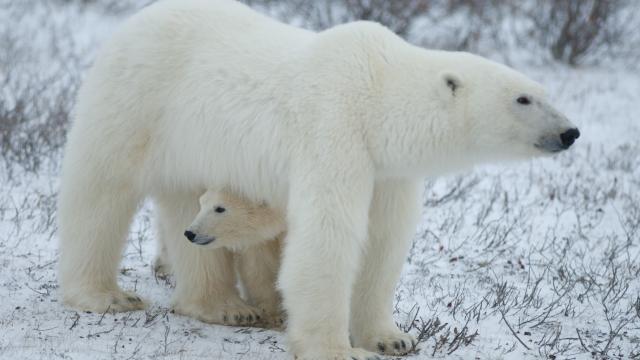A federal study found that oil and gas drilling in Alaska puts polar bears at risk. But U.S. Geological Survey Director James Reilly, the head of the department that conducted the research, refused to make the study public, the Washington Post reported on Wednesday.
The Interior Department’s research looked into the number of polar bears that den and give birth that den and give birth on Alaska’s North Slope near the southern Beaufort Sea. The Trump administration has moved to open up that area to oil and gas drilling and exploration.
Internal memos also obtained by the Post show that the federal research has been complete for at least three months, but Reilly held it up, raising questions about its method of counting polar bear dens and why it uses data collected by a former agency scientist who now works for advocacy organisation Polar Bears International.
“Whenever scientific information is delayed or otherwise denied to the public and policy makers, conservation suffers,” Geoff York, senior director of conservation at Polar Bears International, wrote in an email. “Managers across government need access to the best available information to successfully do their jobs, whether that’s protecting polar bears or people.”
Recent research separately conducted by Polar Bears International also found that opening the region to extractive industry would put polar bears at risk. The analysis, which the Post obtained and reviewed, found that the shrinking sea ice in the Arctic is making oil and gas development easier, but that the lack of sea ice is also putting polar bears at risk, since they depend on it to hunt and travel. The report found that not a single cub born during summer 2012 — the year the Arctic saw its lowest sea ice extent on record — survived. This year, Arctic summer sea ice fell to its second-lowest level on record.
“Southern Beaufort Sea polar bears are already suffering from low survival rates of young bears and ongoing habitat loss, and scientific studies have shown that additional negative impacts on denning polar bears could reduce the ability of the subpopulation to recover,” Elisabeth Kruger, manager of the Arctic wildlife program at the World Wildlife Fund, wrote in an email. “Instead of adding new pressures to this population, now is the time to take strong, precautionary action to give the bears the best chance to adapt to their changing environment.”
The unreleased federal study found that selling leases on the Arctic National Wildlife Refuge would put denning bears in danger, too. This information has implications for the government’s right to sell leases to drill in the refuge’s coastal plain — a move the Interior Department finalised in August.
Polar bear mothers and their cubs are very attached to their dens, and often don’t vacate them even when there’s disruption nearby. This puts them at risk of getting over by equipment or buried by displaced snow. The vibrations from seismic technologies used for fossil fuel exploration may also be harmful for bears. There are currently some 25,000 polar bears left in the Arctic, but scientists have found that without major changes, they could all but disappear by the end of the century.
